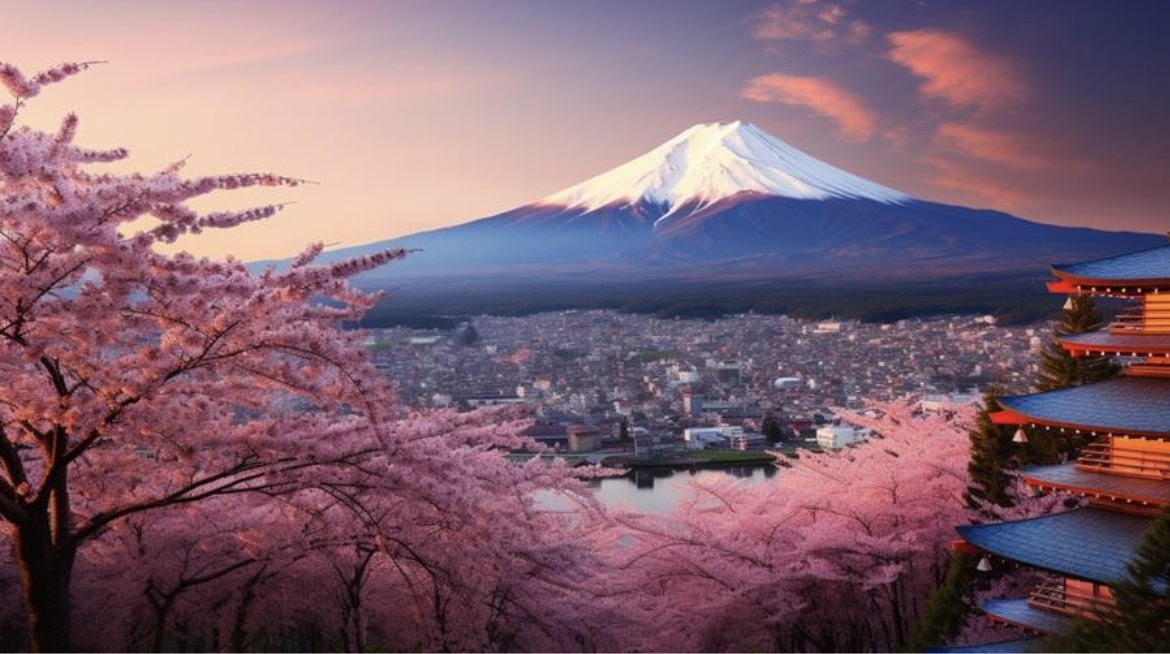Jul 04 (News On Japan) - Once an isolated country that had its doors closed to the outside world, keeping it out of tourists' reach for centuries, Japan has fallen into the opposite extreme in recent decades, becoming one of the most sought-after travel destinations in the world, visited by millions of tourists every year.

The numerous iconic attractions that the island nation boasts combined with its idyllic natural landscapes, and the charm of a culture that resembles none other and remains an enigma for most Westerners make for a heady combination that tourists can't seem to resist.
Japan's allure has become so strong recently that the country is currently experiencing an unprecedented surge in tourism, with record-breaking figures standing proof of the increase. The government's ambitious tourism initiatives, a slumping yen that translates into increased spending power for tourists, allowing them to stretch their holiday budgets further, and the renewed desire to travel after the pandemic experience seem to be the main forces behind this phenomenon.
Although a rise in tourism is usually regarded as a positive development as it drives up the local economy, creating more jobs and contributing to infrastructure development, Japan also suffers the hidden consequences of this uptick. So, it's necessary to dig a little deeper to understand what the travel boom means for the Land of the Rising Sun.
All roads lead to Japan
The massive tourist influx of recent months is like nothing the country has ever experienced before. According to data provided by the Japan National Tourism Organization, the number of international tourist arrivals in the first five months of the year exceeded 14.5 million, up by 70% from last year's figures and inching closer to breaking the record of 32 million tourists set in 2019.
Moreover, May marks the third month in a row with over 3 million visitors coming to Japan from all corners of the world. Three countries, in particular, have contributed to the staggering rise in international arrivals, namely China, Taiwan, and South Korea. Chinese tourists make up the largest share of visitors, which isn't exactly surprising given the proximity factor and the fact that China is the world's largest outbound travel market.
Japan is also an attractive destination for American tourists who have been flocking to the island nation in large numbers. Statistics from the International Trade Administration show that Japan has received over 900,000 American visitors since the beginning of the year – leading to a 17% increase year over year and a 35% rise from 2019.
It's also likely that the trend is going to continue over the upcoming months and push the numbers even higher than expected. The Japanese government has set a bold goal to revive local tourism and exceed 32 million visitors annually by 2025. However, a Bloomberg Intelligence analysis reveals that Japan might reach 34 million visitors by the end of the year and therefore beat the record one year earlier than targeted. At the same time, the Cabinet of Prime Minister Fumio Kishida has set a different goal, aiming to raise the inbound tourism figure to 60 million visitors by 2030.
While tourist arrivals are on a definite upward trajectory, the same thing cannot be said about abroad travel which has yet to recover to pre-pandemic levels. The dramatic decline of the local currency, with the yen hitting a 38-year low, represents a major deterrent for Japanese tourists who can't afford to travel overseas due to their low purchasing power.
High demand and higher prices for hospitality services
With more tourists visiting Japan, more money is coming into the country. As the yen continues to decline, travelers continue to spend their money on hospitality services, including hotels and resorts, restaurants, tours, and other travel-related experiences which have become much more affordable lately. It's estimated that international visitors have already spent a whopping ¥1.75 trillion during Q1, and the figure is expected to go much higher with the ongoing influx of Chinese tourists who are known to be big spenders.
The tourist explosion of recent months has also prompted hospitality providers to charge more for their services. Hotel operators in particular have increased prices considerably, especially during the busy cherry blossom season in March. Throughout this period, the average price of a room was about ¥20,986 ($136) per day – the highest rate in almost three decades for Japan.
As for flight demand, international airlines seem to be busier than ever. According to BloombergNEF, out of the nearly 37 million flights that are expected to take off globally this year, 1 million are going to land in Japan by the end of the year.
Obviously, not all visitors are coming to Japan for leisure. The Asian country also offers a stable and well-developed business environment, attracting a large number of international investors who also add to the spike in foreign arrivals. With all major airports around the world operating flights to Japan, it's also easier than ever for business travelers to find a cheaper way to get to fly business class.
The other side of the coin
The government's plan to boost the local tourism industry appears to be working flawlessly but it might have taken things one step too far as the country is now grappling with the threat of overtourism and all the unpleasant effects stemming from it.
Over half of companies in Japan are dealing with labor shortages and can't find full-time employees to fill in job vacancies which puts many of them at risk of bankruptcy. Locals are feeling overwhelmed as their lives have been disrupted by the large number of foreign visitors eager to explore the popular attractions that Japan has to offer. In addition, tourist crowds are putting ever-growing pressure on local transport and infrastructure, causing traffic congestion and a shortage of parking spaces.
Authorities have already started implementing measures to address some of the issues caused by the tourism surge. For example, a popular photo location around Mount Fuji has been blocked by a huge barrier that town officials have put up due to unruly tourist behavior. Similarly, in some islands, authorities have imposed restrictions on nightlife activities to keep noise and bad behavior in check.
So, while Japan is reaping the rewards of a thriving tourism market, it also has to deal with the negative aspects it brings about and find a way to keep things in balance as visitors continue to cross its borders.















